The 10 Unhealthiest Breads on Grocery Shelves
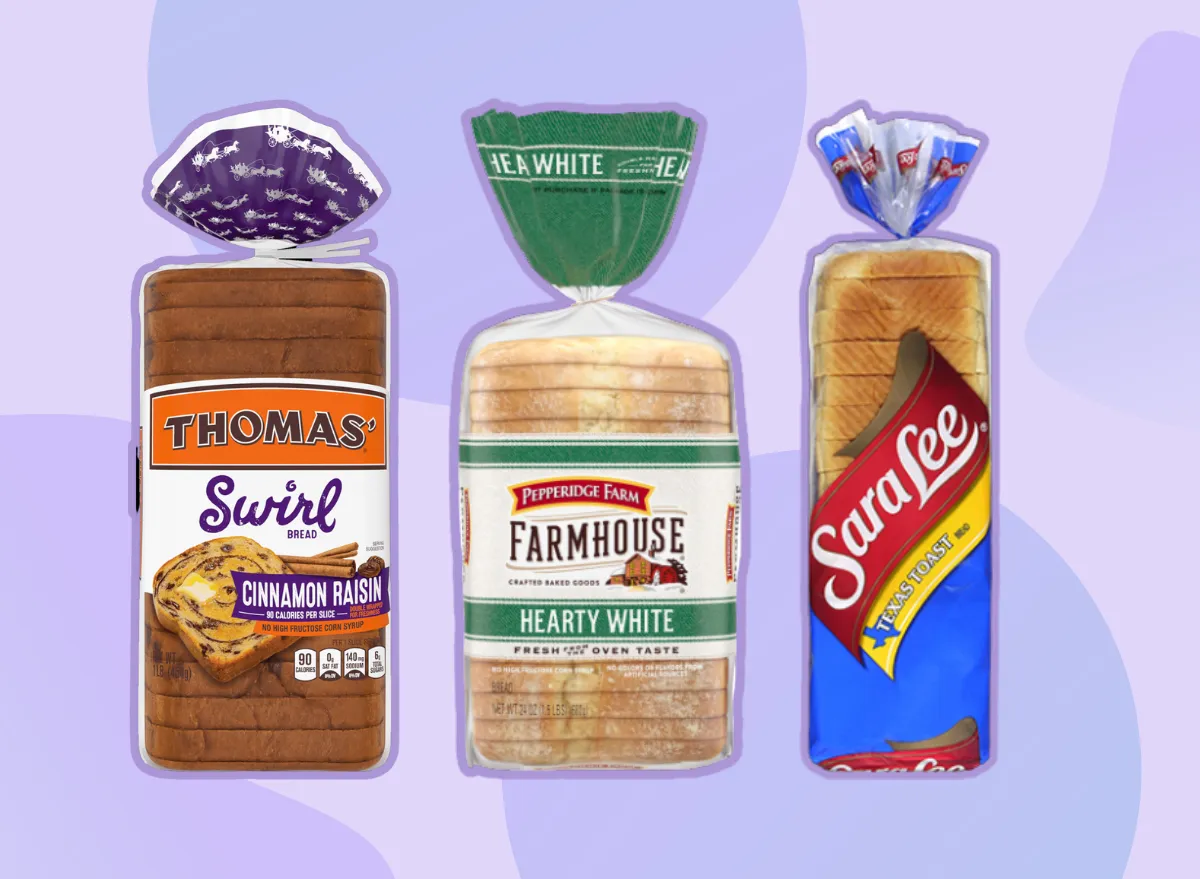
You take care to stack your sandwich with protein-rich deli meats and lots of colorful vegetables, but the slices of bread you choose can make or break how healthy your meal is. While it might seem like just a vehicle for the good stuff inside, bread plays a significant role in the overall nutritional value of your sandwich or side of toast with breakfast, and there are many unhealthy breads loaded with ingredients that may do more harm than good.
Instead of gut-healthy fiber, many low-quality breads are riddled with sodium, added sugar, artificial preservatives (like calcium propionate), dough conditioners (like DATEM and monoglycerides), and artificial flavors or colors.
To help you avoid these synthetic ingredients, we spoke to registered dietitians who gave us a list of the unhealthiest breads to steer clear of on your next trip to the grocery store.
How We Selected the Unhealthiest Breads
When it comes to finding a healthy bread, generally, the fewer the ingredients, the better. A whole-food bread will typically have a simple list of ingredients, mainly consisting of a whole grain (such as whole wheat), water, yeast, and salt, says Danielle Crumble Smith, RDN, LD, a dietitian with Top Nutrition Coaching.
To identify the unhealthiest breads, we looked for the following factors on the ingredient list and nutrition facts label:
- Contain Added Sugars: Breads that list added sugars or sweeteners like high-fructose corn syrup, cane sugar, honey, or molasses among their top ingredients are some of the unhealthiest options. “Some bread may contain small amounts of sugar for yeast fermentation, but it shouldn’t be a primary ingredient,” Smith says.
- High in Sodium: Bread is one of the top sources of sodium in our diets, according to the American Heart Association. Breads with high sodium content—over 100 milligrams per slice—can contribute to elevated blood pressure and other cardiovascular issues, according to Andrea Jones, RDN, LDN, a dietitian with Top Nutrition Coaching.
- Low Fiber Content: Many of the unhealthiest breads are made with refined grains that lack fiber. Fiber supports healthy digestion, blood sugar control, and satiety, but breads with little to no fiber—less than 2 grams per slice—offer few health benefits. Look for “whole wheat” or other whole grains (like whole rye or whole oats) as the first ingredient. “Terms like ‘whole grain’ or ‘100% whole wheat’ tell us that the bread is made from the entire grain kernel, so it retains more fiber and other important nutrients,” Smith says.
- Loaded with Unhealthy Ingredients: Many low-quality breads are packed with artificial preservatives such as calcium propionate. Additionally, they often contain dough conditioners like DATEM and monoglycerides, as well as artificial flavors and colors. These additives are used to improve texture and shelf life but can negatively affect your health over time.
Now that you know what to look for in a unhealthy bread, you’ll also want to take note of which specific breads to avoid at the grocery store.
Below, check out the worst breads on supermarket shelves, and if any of these are currently in your pantry, try swapping them for one of these 11 Breads with the Highest Quality Ingredients.
Pepperidge Farm Hearty White Bread
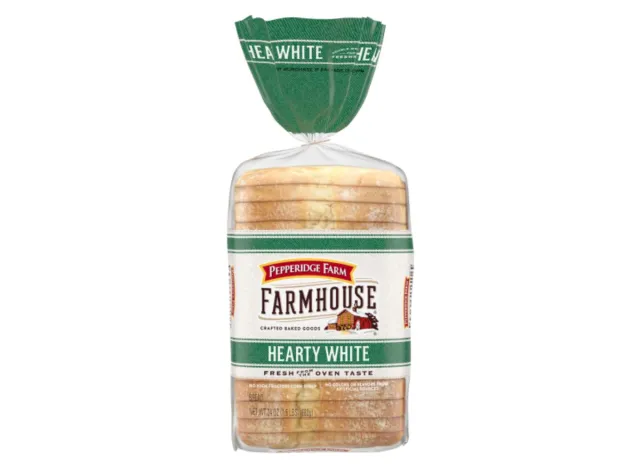
Calories: 130
Fat: 1 g (Saturated Fat: 0 g)
Sodium: 230 mg
Carbs: 26 g (Fiber: 1 g, Sugar: 4 g)
Protein: 4 g
White bread is almost always made with enriched flour, as is the case with this fluffy loaf from Pepperidge Farm. While some nutrients are added back, enriched flour still lacks the full spectrum of nutrients and fiber found in whole grains, and this can contribute to more rapid spikes in blood sugar and fewer digestive health benefits, Smith tells us.
Sugar is the third ingredient in this bread, with each slice boasting 4 grams of the sweet stuff. “Sugar contributes extra calories without essential nutrients, increasing the risk of weight gain and associated health problems like type 2 diabetes and heart disease (when consumed in excess),” Smith says.
What’s more, one slice of this white bread has more sodium than other varieties with 230 milligrams. In addition to not being a heart-healthy option, this bread also should be limited or avoided by those with kidney disease who need to monitor sodium intake, Smith says.
Pepperidge Farm Raisin Cinnamon Swirl Bread
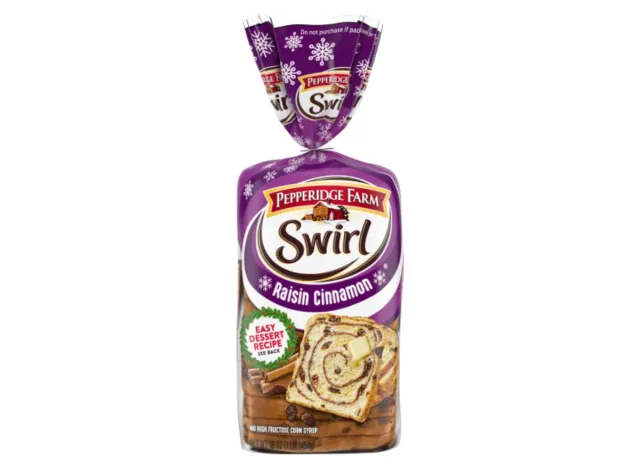
Calories: 100
Fat: 1.5 g (Saturated Fat: 0 g)
Sodium: 105 mg
Carbs: 20 g (Fiber: 1 g, Sugar: 9 g)
Protein: 2 g
Swirled with sweet cinnamon and raisins, this breakfast bread is more like dessert than the base of a healthy morning meal. While the raisins in this bread contain naturally occurring sugar, this loaf manages to add 5 extra grams of added sugars to the mix, hiking up the total sugar count to 9 grams per slice.
“Too much added sugar in our diet can lead to weight gain and obesity, type 2 diabetes, and heart disease,” Jones says. On top of that, this cinnamon raisin bread from Pepperidge Farm doesn’t quite meet the mark for fiber, clocking in at just 1 gram per slice.
Kings Hawaiian Sweet Rolls
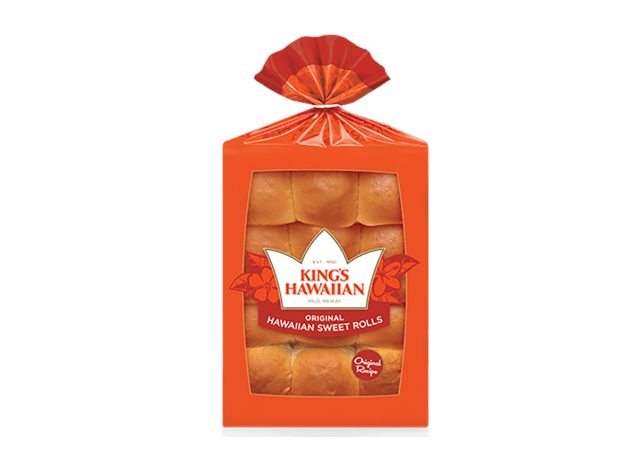
Calories: 90
Fat: 2 g (Saturated Fat: 1 g)
Sodium: 80 mg
Carbs: 16 g (Fiber: 0 g, Sugar: 5 g)
Protein: 3 g
Hawaiian sweet rolls might make for a delicious burger bun, but you’ll want to enjoy these in moderation.
“With 3 grams of protein and 95 grams of sodium per slice, this bread does check the box on a couple of points, but the low fiber content and high amount of added sugar and saturated fat lowers its appeal,” Smith says.
Each bun has a staggering 5 grams of added sugar and half of the fat in each slice comes from saturated fat. “It’s recommended to keep saturated fat less than 30% of the total fat of a product,” Smith says, adding that too much saturated fat can increase your risk of many diseases, most notably, heart disease.
Pepperidge Farm Farmhouse Potato Bread
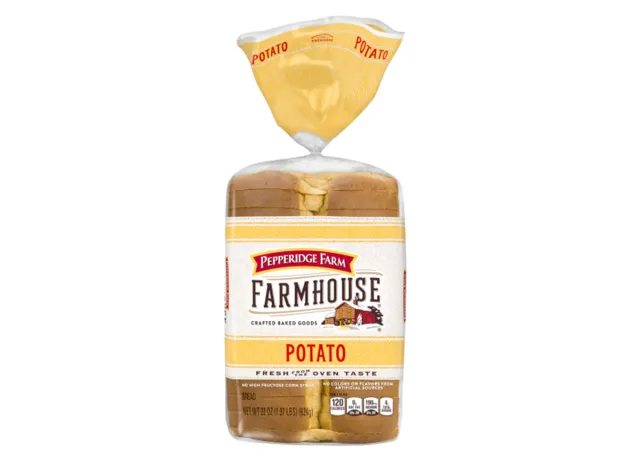
Calories: 120
Fat: 1 g (Saturated Fat: 0 g)
Sodium: 190 mg
Carbs: 23 g (Fiber: 1 g, Sugar: 4 g)
Protein: 4 g
Potato bread is generally just as airy and light as white bread, and that just means you’ll want to look for something more substantial to stack your sandwich with.
The first ingredient is enriched wheat flour, which is devoid of fiber. “While enrichment adds back certain vitamins, this flour is stripped of the natural fiber and nutrients found in whole wheat, which can affect blood sugar control and digestive health,” Smith says.
“The lack of fiber means that it is more likely to be rapidly digested, leaving you tired and/or hungry sooner,” Smith adds. To add insult to injury, each slice contains 4 grams of added sugar. On top of that, this loaf contains calcium propionate and sorbic acid, which are preservatives used to prevent mold and bacterial growth and extend the bread’s shelf life.
“Some studies suggest that certain preservatives might be linked to adverse health effects, including potential allergic reactions and metabolic impacts,” says Smith.
Sara Lee Texas Toast
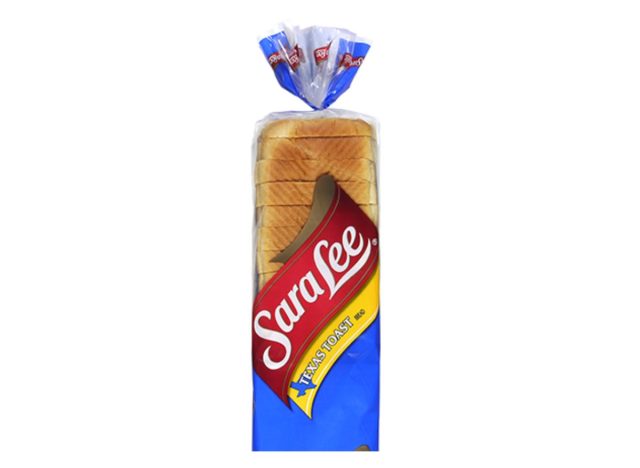
Calories: 100
Fat: 1.5 g (Saturated Fat: 0 g)
Sodium: 200 mg
Carbs: 20 g (Fiber: <1 g, Sugar: 2 g)
Protein: 3 g
Thick-cut and extra fluffy, this bread is made for French toast. And just as sweet breakfasts like French toasts are best saved for the occasional Sunday morning, so should this loaf.
This bread misses the mark on almost every level, except for protein, as it has 2 grams of added sugar and nearly zero fiber. “The biggest downside is that each slice contains 200 milligrams of sodium. Excess sodium intake can increase your risk of high blood pressure, cardiovascular disease, kidney disease, osteoporosis, and certain types of cancer,” Jones says.
Nature’s Own Butterbread
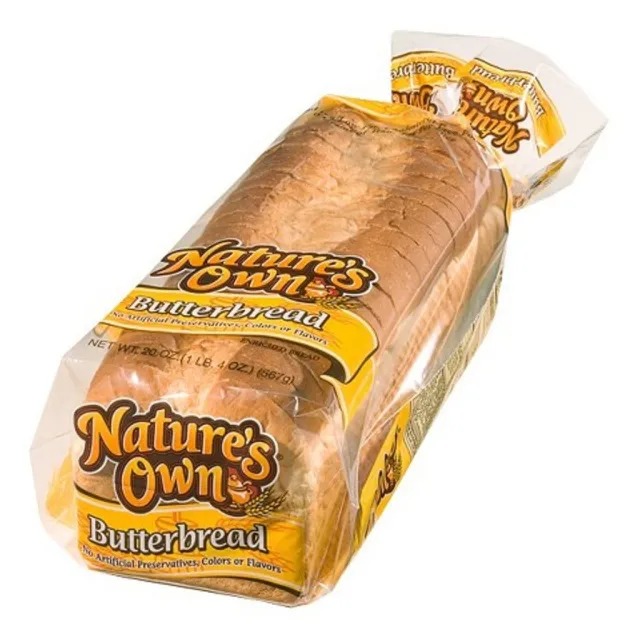
Calories: 60
Fat: 1 g (Saturated Fat: 0 g)
Sodium: 90 mg
Carbs: 12 g (Fiber: 0 g, Sugar: 2 g)
Protein: 2 g
Butterbread usually contains butter to add a rich flavor, but this loaf from Nature’s Own isn’t high in fat. Instead, its fiber and protein contents are where it falls short. We’re not fans of the 2 grams of added sugar that are snuck into this recipe, but what’s even worse is the absolute lack of dietary fiber.
“Given that breads are typically made from grains, the fact that this bread has zero fiber is quite a disappointment,” Smith says. “The intake of dietary fiber is so important for good health due to its ability to improve bowel movements, prevent constipation, help maintain a healthy weight, and lower cholesterol levels, while a diet low in dietary fiber can increase your risk of diabetes, heart disease, and some types of cancer.”
Sara Lee Artesano Brioche
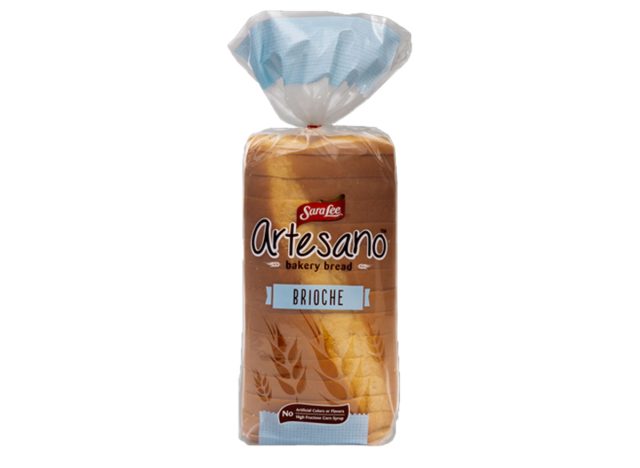
Calories: 110
Fat: 1.5 g (Saturated Fat: 0 g)
Sodium: 200 mg
Carbs: 20 g (Fiber: <1 g, Sugar: 3 g)
Protein: 4 g
Brioche is known for its slightly sweet taste, which, in this case, is due to 3 grams of added sugars. “Overconsumption of added sugars can lead to obesity, type 2 diabetes, and heart disease,” Smith reminds us.
As with many other breads on our list, this pick is also made from enriched flour, so it’s low in fiber. Brioche traditionally contains a higher amount of fats, often in the form of butter or oil. “While fats are not unhealthy per se, excessive intake of saturated fats (which is found in butter) can contribute to increased cholesterol levels and heart disease risk,” Smith says.
“For those with high blood pressure or cardiovascular disease, this bread isn’t the best option as it is on the higher end of the salt spectrum with 200 milligrams per slice,” adds Smith.
Also worth noting: Dairy isn’t always an ingredient found in bread, but this brioche contains both butter and buttermilk so folks with dairy allergies or sensitivities would certainly want to steer clear.
Nature’s Own Perfectly Crafted Brioche Bread
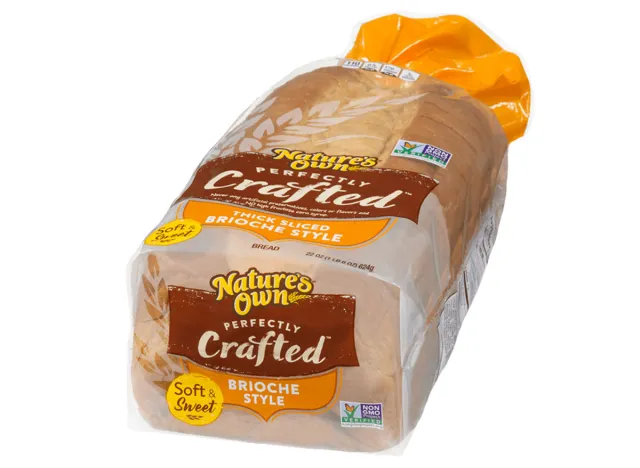
Calories: 110
Fat: 1.5 g (Saturated Fat: 0.5 g)
Sodium: 170 mg
Carbs: 21 g (Fiber: 1 g, Sugar: 4 g)
Protein: 4 g
“This bread contains unbleached enriched wheat flour which, while not bleached, is still a refined grain, meaning it lacks the fiber and a portion of nutrients found in whole grains,” Smith says, adding that refined grains can contribute to blood sugar spikes and don’t provide the same level of satiety and health benefits as whole grains.
While the other ingredients are not necessarily “unhealthy” for the general population, the presence of refined grains, added sugars, and additives deem this bread not the best choice if your goal is to prioritize whole foods or if you’re trying to limit your added sugars.
This doesn’t mean you can’t allow yourself the occasional BLT on brioche or a French toast breakfast. The key is moderation and balancing such products with a diet rich in whole, unprocessed foods, Smith says.
Thomas Cinnamon Raisin Swirl Bread
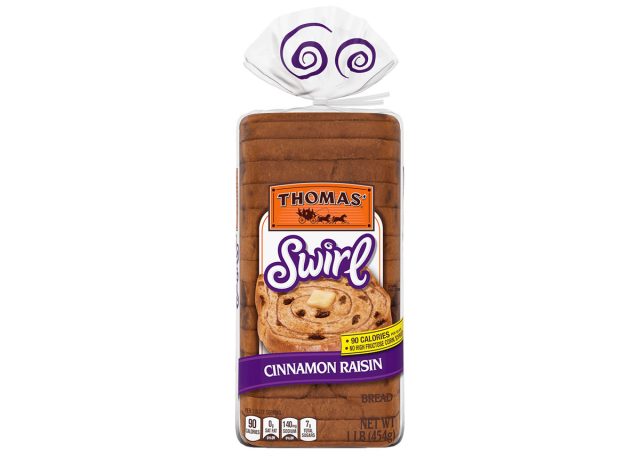
Calories: 90
Fat: 1.5 g (Saturated Fat: 0 g)
Sodium: 140 mg
Carbs: 18 g (Fiber: <1 g, Sugar: 6 g)
Protein: 2 g
This dessert-esque bread packs 6 grams of sugar per slice and is nearly devoid of fiber, which means it’s more likely to spike your blood sugar levels. That’s why Smith recommends that people with diabetes and/or insulin resistance avoid or limit this cinnamon-raisin bread.
Smith also points out that this bread contains an emulsifier called monoglycerides, which can be synthetically derived or sourced from animal or vegetable fats. While generally recognized as safe, some people prefer to avoid synthetic or processed additives.
Bimbo Soft White Bread
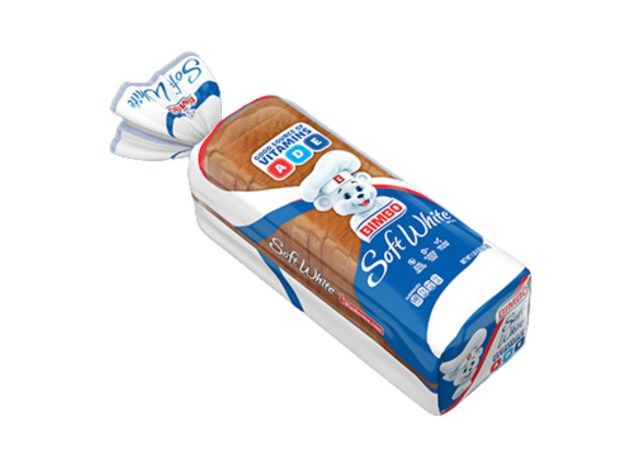
Calories: 150
Fat: 2 g (Saturated Fat: 0 g)
Sodium: 290 mg
Carbs: 28 g (Fiber: <1 g, Sugar: 3 g)
Protein: 5 g
Bimbo’s Classic White Bread is better left on store shelves because it’s made of refined grains and devoid of filling fiber. “The major letdowns with this bread are the high amount of sodium per slice and low fiber content,” Smith says.
“The combination of a diet high in sodium and low in fiber can lead to many different health conditions, including heart disease and gastrointestinal issues,” she adds.
Bimbo’s Soft White Bread also contains a flurry of artificial preservatives such as calcium propionate and dough conditioners such as DATEM and monoglycerides, which Smith recommends avoiding.









